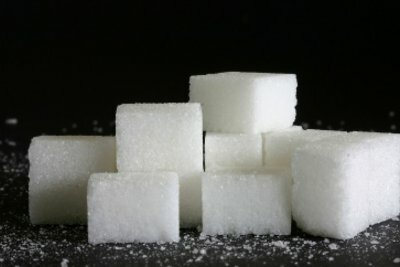Determine the oxidation number of glucose
Redox reactions are an important topic in chemistry. In order to be able to set up a reaction scheme better, the oxidation numbers of the reactants are determined. In the case of larger molecules such as glucose, these are usually not so easily visible. You can see here how you determine the oxidation numbers here.

What is an Oxidation Number?
- An oxidation number is a hypothetical value that indicates what charge an atom would have in a chemical compound if the neighboring atoms with the electrons bound to them were removed.
- The atomic number indicates the difference to the normal charge of the atom.
- A positive oxidation number indicates a decreased electron density.
- A negative oxidation number indicates an increased electron density.
How are oxidation numbers determined?
Several rules have been established for determining oxidation numbers, which are listed below:
Formal summons - declaration
Electric charge is an elementary quantity in physics. The world and its components ...
- In the elementary state, atoms always have the atomic number 0.
- Ions have the atomic number that corresponds to their charge.
- In the case of compounds that have no external charge, the sum of the oxidation numbers of the atoms is equal to 0.
- In the case of compounds that have a charge, the sum of the oxidation number is equal to the charge of the compound.
- For compounds specified in the Lewis formula, this is broken down into ions in order to determine the oxidation numbers. The electrons are assigned to the more electronegative partner.
- The majority of the elements can assume different oxidation numbers.
There are additional rules to make it easier to determine the oxidation number:
- Hydrogen has the OZ +1, except in compounds with itself (0) or with less electronegative elements (then -1)
- Oxygen usually has the OZ -2, except in peroxides (-1), hyperoxides (-0.5) and in compounds with fluorine (+2).
- Fluorine has the highest electronegativity and therefore always the OZ -1 in compounds.
- Metal atoms in ionic compounds always have a positive OZ.
- Alkali metals always have +1 and alkaline earth metals +2.
How to determine the oxidation number of glucose
- First of all, you need glucose in the Lewis formula.
- Make a note of the electronegativity of the glucose binding partners.
- The top carbon atom receives two bonding electrons from the hydrogen atom, one from the equivalent neighboring carbon, but none from oxygen. It thus has three binding electrons. However, since carbon in its elemental state has four binding electrons, it has an oxidation number of +1 in this constellation.
- The following carbon atoms each have an OZ of 0, since the binding electrons are divided up in such a way that they always have four of them.
- The lower CH2OH group, the oxidation numbers are assigned according to the rules given above. H has +1, O has -2. In total, this makes +3 and -2, so that the carbon atom has to compensate with -1.
How helpful do you find this article?

